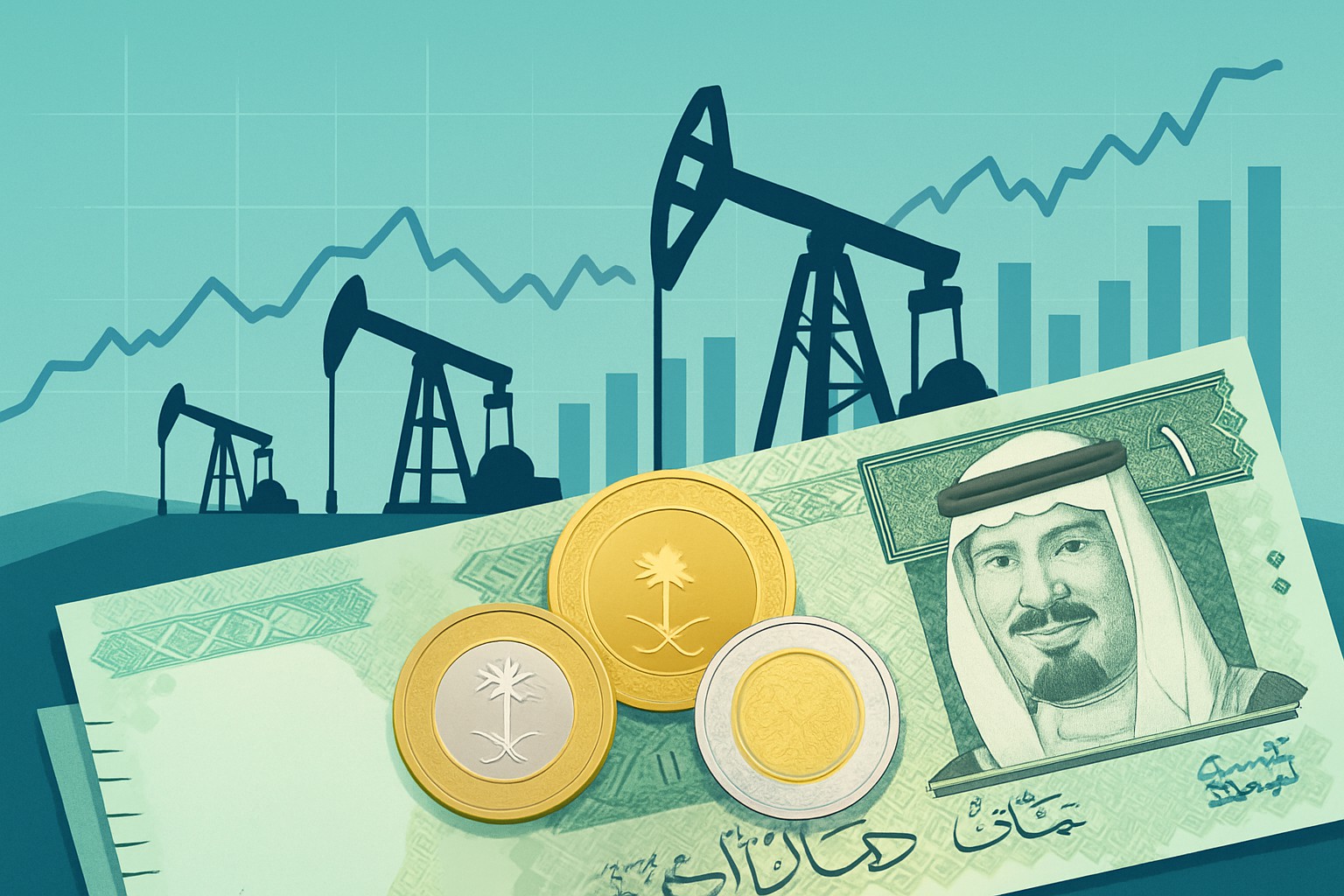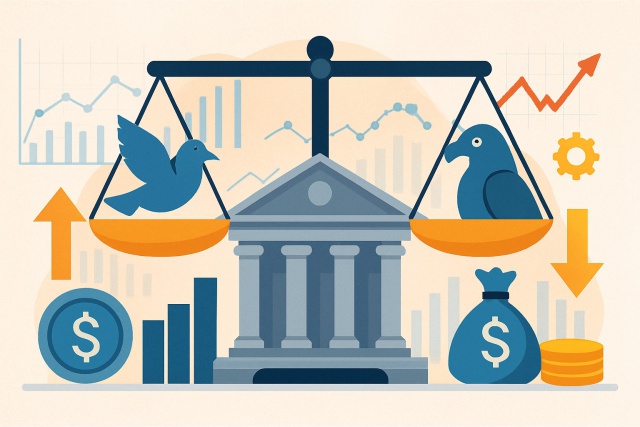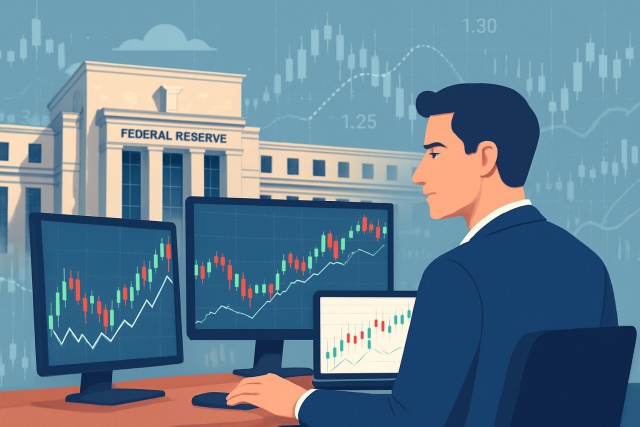
What is the monetary policy committee and how it shapes markets
Discover the essential role of the monetary policy committee in shaping economies. Learn how it sets...

The Saudi Arabian Riyal is the official currency of Saudi Arabia and holds a central spot in the financial markets across the Middle East. You will find it popping up all the time in international trade and investment deals as well as economic transactions within the region and farther afield. The Riyal’s value tends to dance to the tune of various economic and geopolitical factors as well as policy changes. These then ripple through trade balances, inflation rates and investor sentiment.
This article dives into the key economic and geopolitical factors that sway the value of the Saudi Arabian Riyal. It unpacks complex concepts like currency pegging and monetary policy and explains how oil prices play a starring role
The Saudi Arabian Riyal (SAR) has been holding down the fort as the official currency since 1925 and is pegged to the US dollar at roughly 3.75 SAR per 1 USD. This fixed exchange rate does a pretty good job of keeping the Riyal steady, tying it tightly to the ups and downs of the dollar on the global stage.
Currency movements reveal the ever-shifting value of one currency compared to another, usually shown through exchange rates. When the Riyal gains ground against other currencies, we say it appreciates. When it falls, it depreciates. Volatility refers to how often and how sharply these changes happen.
A handful of key economic factors play a starring role in shaping the value of the Riyal. Given that Saudi Arabia’s economy leans heavily on oil exports these factors usually circle around commodity prices, government policies and monetary strategies.
Saudi Arabia proudly holds the title of the world’s largest oil exporter. Its economy is deeply tied to oil revenues. Because of this link, any ripple in global oil prices quickly affects government income, public spending, and the economy overall. When oil prices climb, Saudi Arabia gets a nice influx of foreign currency that usually boosts the Riyal and helps keep it steady. Conversely, when prices dip, government revenues can take a hit and might strain the Riyal if spending tightens or reserves are used.
"Oil prices are pretty much Saudi Arabia's paycheck in action. When they climb, the country suddenly finds itself with a bit more cash to splash around, which usually gives its currency a nice little lift. But when prices dip, the Riyal doesn’t stay silent — it often mirrors those tougher times right along with them."
The Saudi Arabian Monetary Authority (SAMA) serves as the central bank and keeps a close eye on the money supply, interest rates and currency market moves to make sure the Riyal stays comfortably pegged to the dollar. SAMA doesn’t just sit on its hands. It actively manages liquidity in the financial system and jumps in to buy or sell foreign exchange reserves whenever necessary to keep the Riyal steady as she goes.
Saudi Arabia’s government budget is heavily tied to oil revenues and the choices made around spending, subsidies and infrastructure projects play a big role in shaping both liquidity and confidence in the Riyal. When the budget swings into surplus territory, it usually means beefing up reserves and giving the currency a solid boost. On the flip side, running a deficit might force the government to borrow more or dip into foreign assets. This can shake up the currency supply and influence how investors size up the country’s economic wellbeing.
SAMA keeps a hefty stash of foreign currency reserves ready to prop up the Riyal and soften the blow when economic shocks come knocking. Meanwhile, the Public Investment Fund is busy spreading its wings by diversifying assets across global markets. Together, these reserves and investments give the country the breathing room to steer its currency value and steady the markets.
The Riyal's value is not shaped solely by cold economic data. It’s also influenced by the ebb and flow of international relations and regional stability as well as headline-grabbing political events that catch the world's attention. These factors often affect investor confidence and drive the balance between demand and supply for the currency. Usually when Saudi Arabia experiences a calm and steady geopolitical climate the Riyal tends to hold its ground nicely.
The Riyal is pegged to the US dollar, so its value tends to shadow the USD pretty closely. This arrangement offers a decent amount of currency stability, but it does tie Saudi Arabia’s hands a bit when it comes to charting its own monetary course. When the US Federal Reserve makes a big move, the Riyal’s value feels it right away.
Getting a handle on market sentiment and speculation can sometimes feel like trying to read the room at a party where everyone’s speaking a different language. But once you tune in, it’s surprisingly insightful—and maybe even a bit fun. After all, these factors play a huge role in how markets move, often more than you might expect at first glance.
Trader psychology and market sentiment often call the shots when it comes to short-term sudden swings in the Riyal even if the underlying fundamentals are holding steady.
Over the years the Saudi Arabian Riyal has experienced steady stretches and noticeable bumps along the road due to key economic and geopolitical twists and turns. Take the 2014 to 2016 oil price crash for example when the Riyal’s value took a hit because of slipping revenues. Add regional conflicts or diplomatic spats and you get a cocktail of uncertainty that keeps things interesting. Still, the currency peg acts like a steady hand to prevent the Riyal from wild swings.
| Date | SAR Movement | Triggering Event | Explanation |
|---|---|---|---|
| 2014-2016 | Pressure on Stability | Global oil price crash | A plunge in oil prices really squeezed fiscal revenues, putting noticeable strain on the peg |
| 2017 | Stable | Introduction of VAT and economic reforms | Government’s moves, like rolling out VAT and reforms, lent the currency a much-needed confidence boost |
| 2020 | Increased volatility | COVID-19 pandemic and oil price crash | The sudden drop in demand rattled oil revenues, sending market sentiment on a bit of a rollercoaster ride |
| 2021 | Strengthened | OPEC+ production cuts and economic recovery | A lucky combo of higher oil demand plus production cuts helped steady the Riyal’s footing |
| 2023 | Moderate fluctuations | US Federal Reserve interest rate hikes | The US dollar flexed its muscles, influencing the SAR thanks to that tight peg |

Historical trends in the Saudi Arabian Riyal exchange rate influenced by major economic and geopolitical events
To get a clear picture of the Saudi Arabian Riyal it pays to watch economic indicators and geopolitical events. Following oil price movements and budget updates usually gives you a solid sense of what will nudge the Riyal one way or another.
Tired of missing opportunities and making suboptimal trading decisions? TrendSpider's cutting-edge platform automates complex technical analysis, saving you time and reducing human error.
With multi-timeframe analysis, dynamic alerts, backtesting, and customizable charting, you'll gain a competitive edge in identifying trends and making informed trades across global markets.
As a dedicated trader, you know the power of technical analysis in navigating the financial markets. TrendSpider is the cutting-edge tool you need to take your trading strategies to new heights. With its advanced charting capabilities and automated pattern recognition, TrendSpider empowers you to make informed decisions faster.
11 posts written
With over a decade of experience navigating the intricate world of trading, Quentin Merriweather's expertise lies in developing innovative strategies that harness the power of cutting-edge technologies.
Read Articles
Discover the essential role of the monetary policy committee in shaping economies. Learn how it sets...

Discover how understanding and managing notional value empowers Binance traders to accurately assess...

Understanding dovish vs hawkish policy shifts is essential for market participants as these changes...

Learn how hawkish and dovish Federal Reserve communications impact forex markets. This guide breaks...
